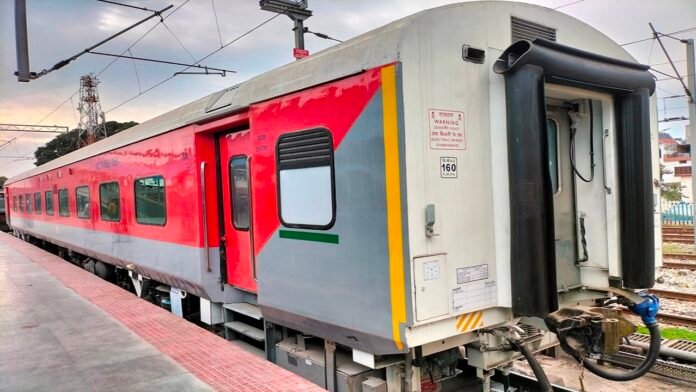About sustainable transportation, the Northeast Frontier Railway (NFR) has successfully electrified broad gauge routes, marking a pivotal move to reduce carbon emissions and embrace eco-friendly rail travel.
The electrification initiative, part of the railway’s broader commitment to environmental conservation, aims to transition from traditional diesel-powered locomotives to electric ones. This shift not only contributes to the reduction of carbon footprints but also aligns with global efforts to embrace cleaner, greener modes of transportation.
The electrification process involves installing overhead electric wires along the broad gauge routes, facilitating the operation of electric locomotives. This transition offers several environmental benefits, including decreased air pollution, lower greenhouse gas emissions, and a more energy-efficient rail network.
One of the primary advantages of electrification is the substantial reduction in the carbon intensity of train operations. Electric locomotives are inherently more energy-efficient than their diesel counterparts, translating into a more sustainable and environmentally friendly mode of transportation.
All About NFR
The NFR’s commitment to electrification extends beyond environmental considerations; it also brings economic advantages. Electrified rail networks often result in lower operational costs, contributing to the overall efficiency and sustainability of railway operations.
The successful electrification of broad gauge routes is a testament to the railway’s dedication to modernizing its infrastructure and embracing technology that aligns with global environmental goals. It positions the NFR as a leader in sustainable rail transportation within the Indian railway network.
As the NFR continues to electrify more routes, the positive impact on the environment is expected to grow exponentially. The reduction in reliance on fossil fuels for rail travel not only supports the fight against climate change but also sets an example for other railway zones to adopt similar eco-friendly practices.
The electrification initiative is part of a larger vision to transform the railway network into a cleaner, more sustainable mode of transportation. It aligns with the broader global consensus on transitioning to cleaner energy sources and reducing the ecological footprint of traditional transportation systems.
After checking on the electrification projects, passengers and communities served by the NFR can anticipate a more environmentally conscious and energy-efficient railway network. The transition to electric locomotives represents a crucial step towards a greener and more sustainable future for rail travel in the Northeast Frontier Railway zone.




